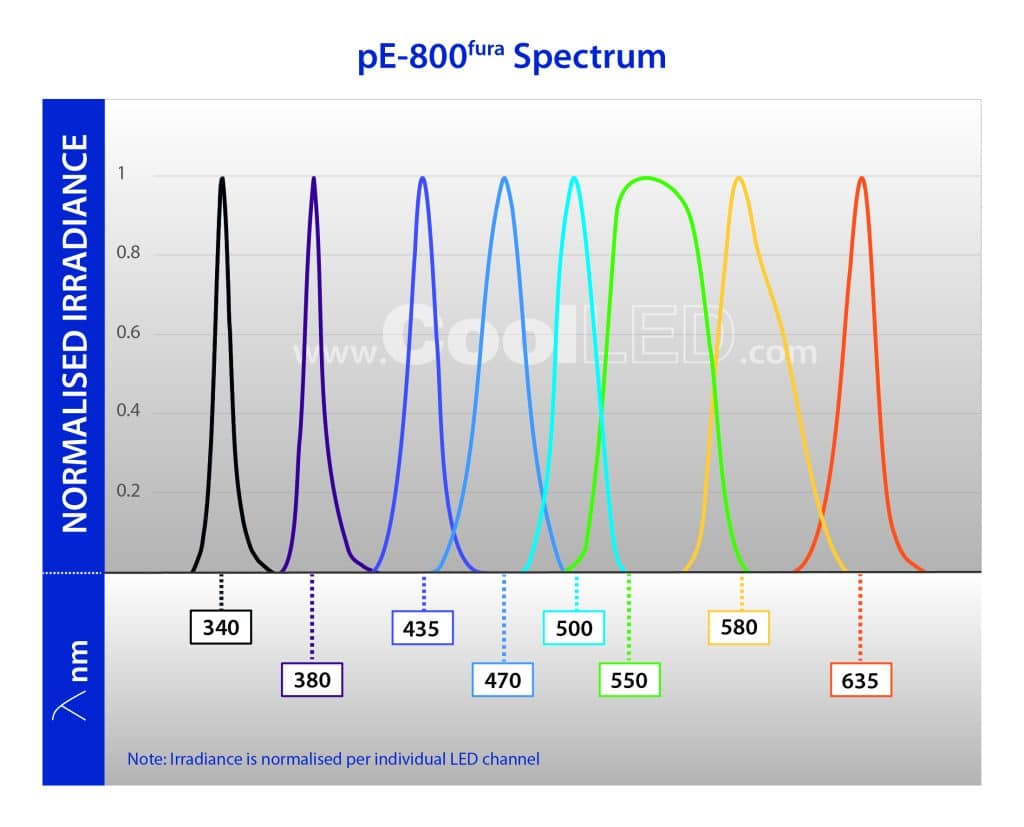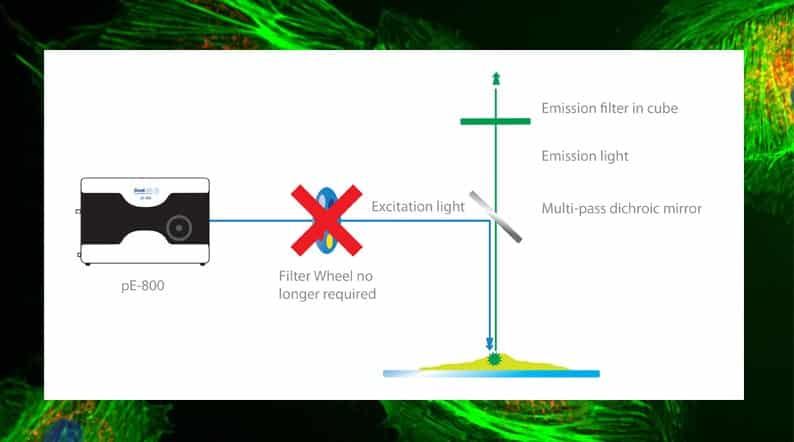Advantages of LED Illumination for Neuroscience Research
Sponsored by CoolLED, on 26 September 2024
Widefield fluorescence microscopy is a popular method for neuroscience research, where affordability combined with speed is ideal for a range of applications. Imaging with a high temporal resolution enables the capture of dynamic biological processes with greater detail, and increases the accuracy of ratiometric fluorescence measurements (for example when performing Fura-2 calcium imaging). Speed is also a benefit when it comes to optogenetic stimulation.
Several components help determine the maximum speed of a widefield fluorescence imaging setup, but the illumination system can easily be overlooked when considering this. Instead, it is important to understand the breakthroughs in LED light sources which have now made it possible to reach ‘lightning-fast’ speeds in widefield microscopy.
High-speed LED illumination
Traditional mercury and metal halide lamps for widefield fluorescence microscopy rely on physical shuttering which can be as slow as 20 ms, whereas electronically controlled LED illumination systems bypass this latency. Operating the illumination system through imaging software is faster in comparison, but latencies can still be introduced by USB serial communications and computer operating system overheads. This may also impact system synchronisation when combining imaging with other techniques. Digital control via signals such as TTL pulses is how LED illumination systems such as the 8-channel CoolLED pE-800fura are able to achieve speeds of under 7 μs. Analogue control for irradiance is also available, and is beneficial in cases such as adjusting the power of optogenetic stimulation in an otherwise precisely timed experimental protocol.
A common misconception in multiplex fluorescence imaging is that a trade-off must be made between speed and contrast. Single-band filter cubes mounted into a motorised filter cube turret offer high contrast but low speed, whereas multi-band filter sets offer high speeds but low contrast. Modern LED illumination systems featuring individual channel switching instead allow the best of both worlds when used with Pinkel filter configurations, using a single-band excitation filter alongside a multi-band emission filter and multi-band dichroic mirror (Figure 2). When the single-band excitation filters are housed in the illumination system itself, in front of each individual LED channel, this allows the filter cube housing the multi-band filters to remain stationary and removes mechanical latency from the system. The speed is then limited only by LED channel switching speeds, which as previously mentioned can be as fast as under 7 µs.


Focusing on filters
Unlike lasers, each LED channel has a broader spectrum which means they often offer a greater coverage of fluorophores. An LED light source is likely to be compatible with new fluorophores becoming available in the future, such as red-shifted dyes which reduce phototoxicity. However, this also means that the spectrum of LEDs requires careful tailoring to the fluorophore(s) by using optical filters. This is an even greater consideration when using multi-band filters, which must be chosen carefully to avoid bleed-through (also known as crosstalk) and a reduction in the signal-to-noise ratio. To complicate matters, many filters have been designed around traditional metal halide light sources.
Not everyone has the time to analyse spectral data in order to carefully match optical filters, illumination system and fluorophore sets, and an easier option is to make use of online tools such as the CoolLED Filter Finder Tool, which lists available filters optimised for LED illumination systems.
Summary
LED microscopy illumination has disrupted traditional approaches to high-speed imaging and optogenetic stimulation for neuroscience, and the CoolLED Support Team are available to help researchers understand which filters, light sources and other components are right for each individual setup.
For more information:
- Compare CoolLED Illumination Systems for Neuroscience
- Visit us at the Society for Neuroscience 2024 in Chicago, booth 540
- Contact info@coolled.com



 (No Ratings Yet)
(No Ratings Yet)